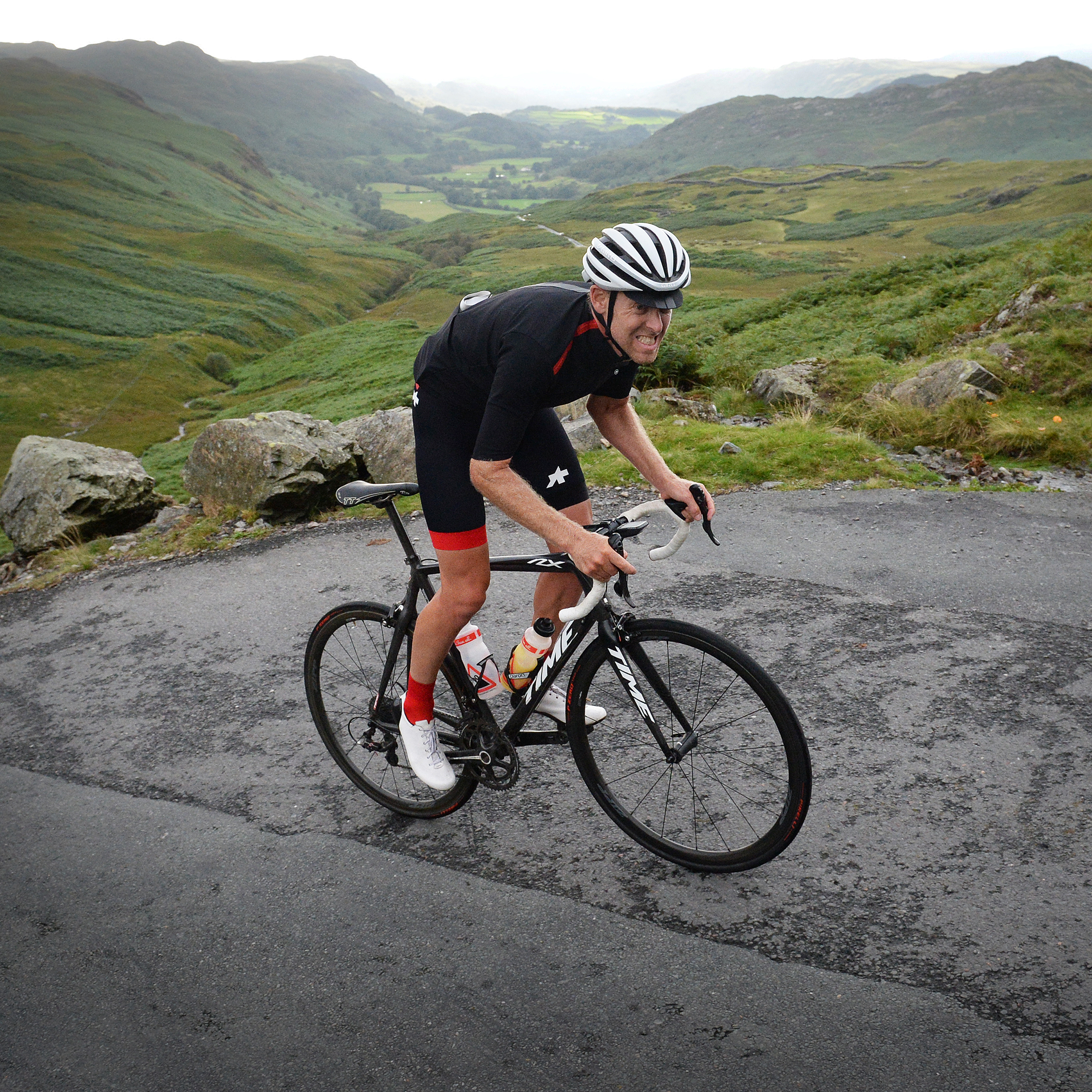We might not have high mountain passes found in parts of Europe in our back yard, but the steepest road in the UK is mighty steep.
The old saying ‘here for a good time, not a long time’ might apply to hill climbing enthusiasts’ experience of indulging their hobby in Britain.
A ‘good time’ might not be the words you’d choose shortly after coughing up a lung at the top of one of these climbs.
But for those riders who like to test themselves and laugh in the face of gravity, conquering any one of these ascents is a feather in the cap.
To tackle the UK's steepest climbs, go armed with the best climbing bike and as high a VO2 Max and power-to-weight ratio as possible.
This feature was originally published in issue 387 of Cycling Plus magazine.
Bamford Clough, Peak District
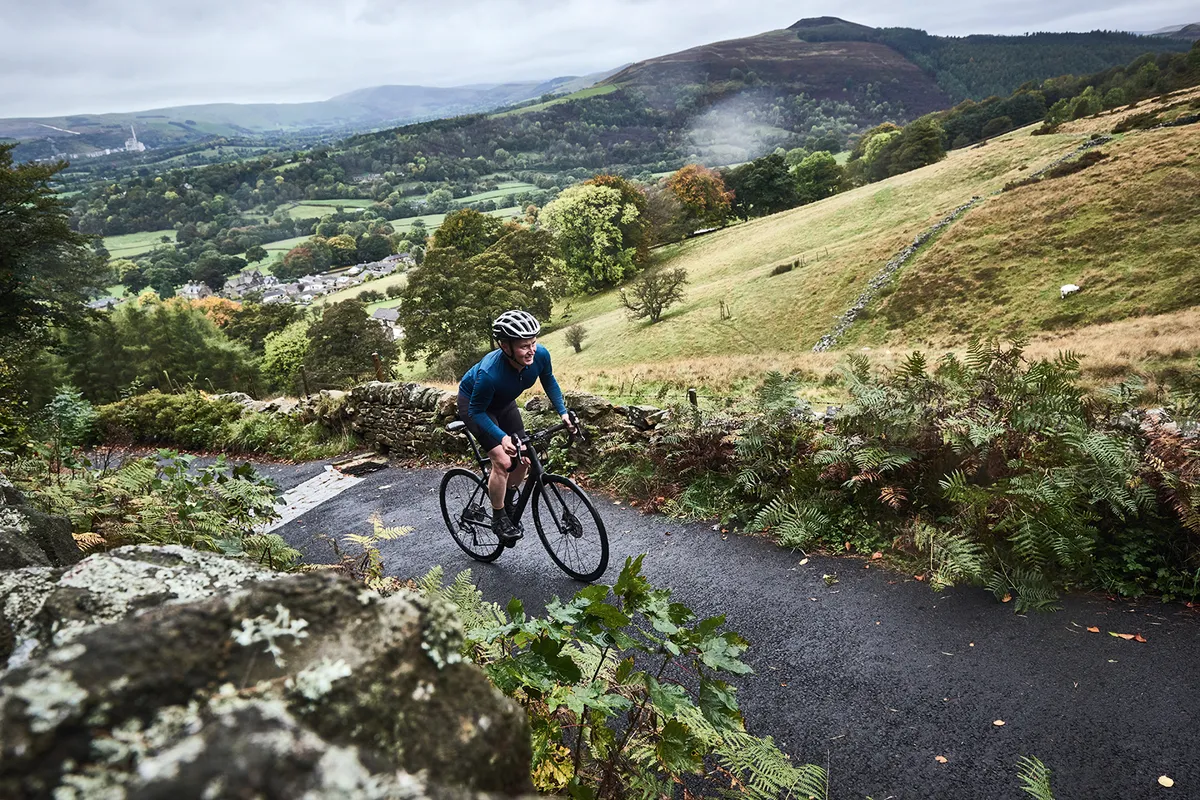
- Length: 664m
- Height gain: 142m
- Average gradient: 21 per cent
- Maximum gradient: 36.5 per cent
While the ink was still drying on a piece this writer had done on Afon Ddu, entitled ‘Britain’s steepest road’, it turned out the tarmac was still drying on another climb that would move the goalposts once again.
We’d heard murmurings over the summer that contractors were going to surface a crazily steep track nearby, but didn’t pay it much attention until early September when our inbox became flooded with pictures of the 35 per cent gradient signs that had been placed at the top and bottom, a figure that, if true, would make it Britain’s new steepest road.
From the summit, staring down at the immaculate asphalt, it’s a climb that, for all hill climbing completists, demands to be ridden.
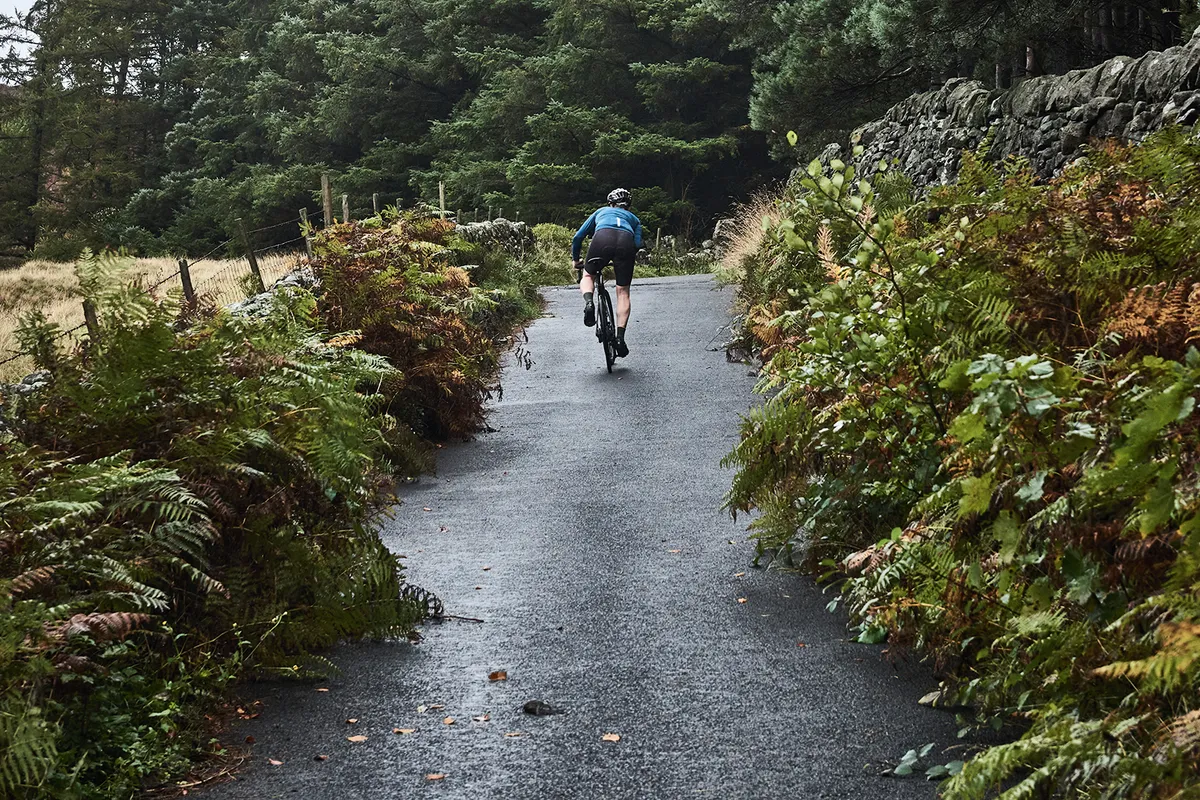
From the mid-section, a slope that’s already 25 per cent falls out of sight and gives you a queasy feeling in the pit of your stomach.
It's so steep that it’s a climb even battle-hardened climbers might only try once. Okay, only summit once – it might take you a few goes to crack it. Your bike and knees won’t forgive you for making a habit out of it.
The climb is hard all the way from the village, but passing the first 35 per cent warning is where things take a turn for the extreme.
It’s no doubt a summer climb – any leaves on the ground or rain will render it impossible, given the fall in traction. Make no mistake, this is the stuff of nightmares.
To simply get up this road is an achievement. Forget speed, forget Strava KOMs, pure survival is the name of the game.

At its apex, the slope measures 36.5 per cent, not just at a single moment but for a good few metres. And it’s this abominable stretch, followed immediately by an intolerable cobbled storm drain, that makes it one of the biggest tests you’ll ever face on a bike.
Get over this section – if you’re still on two wheels, that is – and the gradients drop down to 25 per cent. Or as it’s referred to on Bamford Clough, false flat.
Vale Street, Bristol
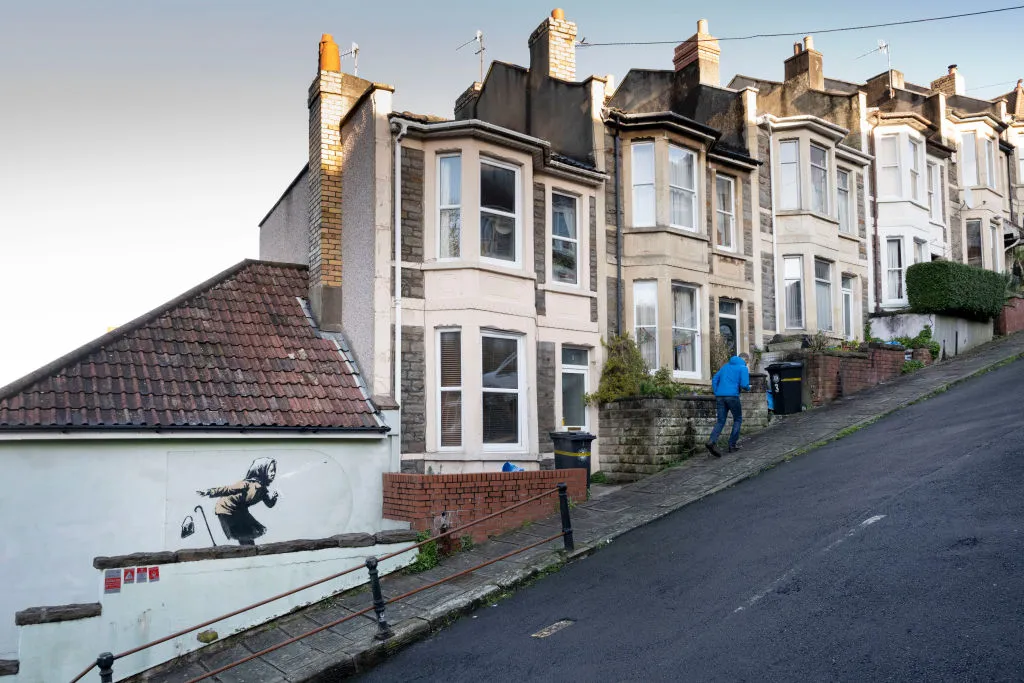
- Length: 100m
- Height gain: 17m
- Average gradient: 22.9 per cent
- Maximum gradient: 25.6 per cent
Vale Street may be incredibly short, but its first 10 metres are hard to get your head around, let alone your legs. Famous for an Easter Day egg rolling contest held on its slopes and for the fact that drivers have to park their cars at an angle to the street, rather than parallel to it, this is just the sort of challenge that draws in hill climbers.
On approach, the road looks nigh on impossible, a wall of tarmac with a flight of steep steps running along each side for pedestrians. It’s not the sort of climb you just roll up and over, you need a plan of attack, you need to be primed, in the right gear and committed to it 100 per cent.
Starting on Park Street (itself a sprightly 20 per cent) that juts out from the A4 as you head east out of the city, you can either roll down then turn sharp right or climb up and turn sharp left.
It’s arguably best to climb up and avoid mishaps on the abrupt change of gradient – spin a small gear from the bottom of Park Street then, once at the base of Vale Street, turn on the afterburners.
The key to success is to ride on the right or ‘wrong’ side of the road, then divert back to the correct side at an angle to minimise the impact of the slope – get over the first 10 metres without the climb steering you into the gutter and you’ve cracked it.
If you are feeling brave, you could lock horns with it on the left side, but it’s a tactic that many have tried and failed.
Trooper Lane, Halifax
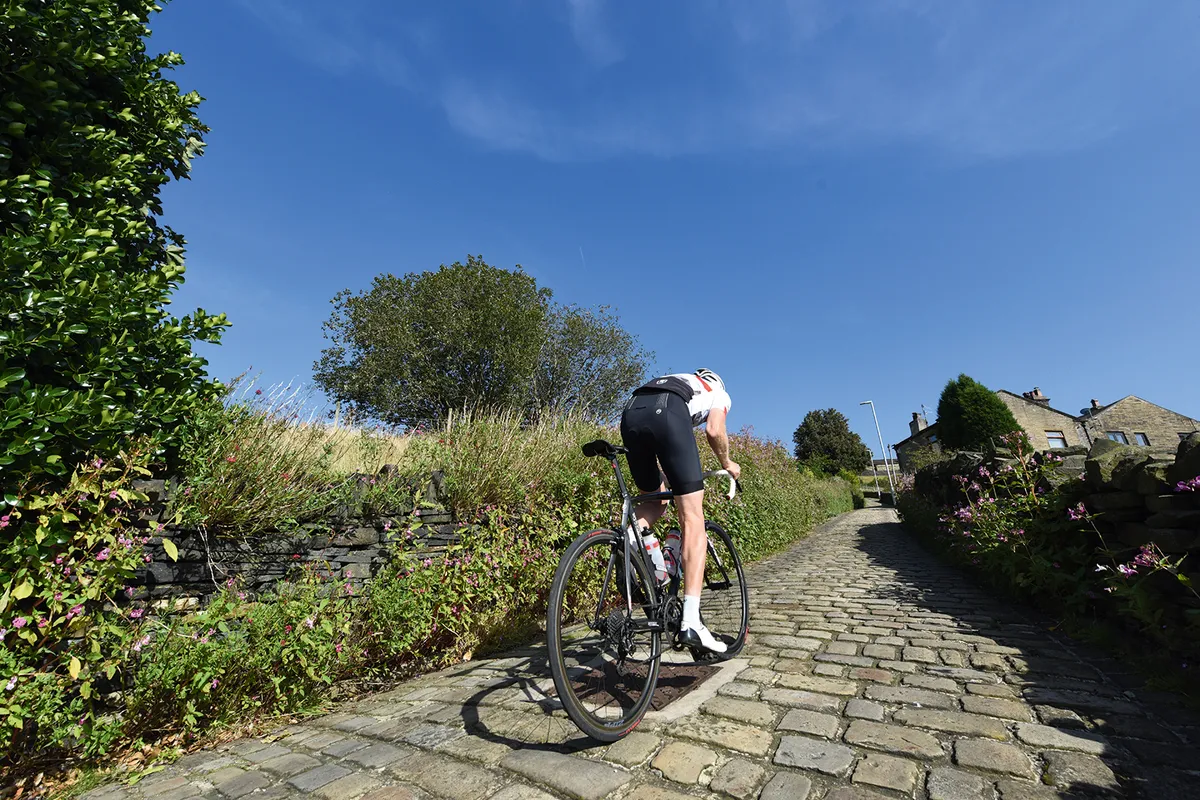
- Length: 769m
- Height gain: 123m
- Average gradient: 14.8 per cent
- Maximum gradient: 27.7 per cent
Unlike many of the other climbs here, Trooper Lane falls shy of the magic 30 per cent mark, but it has something none of the others do, something that makes it significantly harder to ride: cobbles.
There are myriad such climbs around Halifax, from the better known Shibden Wall to the fearsome Old Lane, but Trooper Lane takes the cobbled climb to the next level.
Starting on the giant smooth stones of Swan Bank Lane, it then returns to the comfort of tarmac for its first half. It’s still no stroll in the park, rarely dropping below 20 per cent as it thrashes back and forth up the valley side. 300 metres in and you hit the perilous cobbles, with added steepness for good measure.
Round the bend and it gets silly. You’ll have no more sprockets to play with here and the only thing that you’ve got to lean on is brute force, a savviness to pick a good line across the increasingly rugged stones and your shrewd decision to ride here on a dry day.
There’s a short period of respite as you pass a series of front doors and driveways on either side, before a return to madness for the finale, a stretch of climb that would make even the toughest of Flandrians weep.
Rosedale Chimney, North York Moors
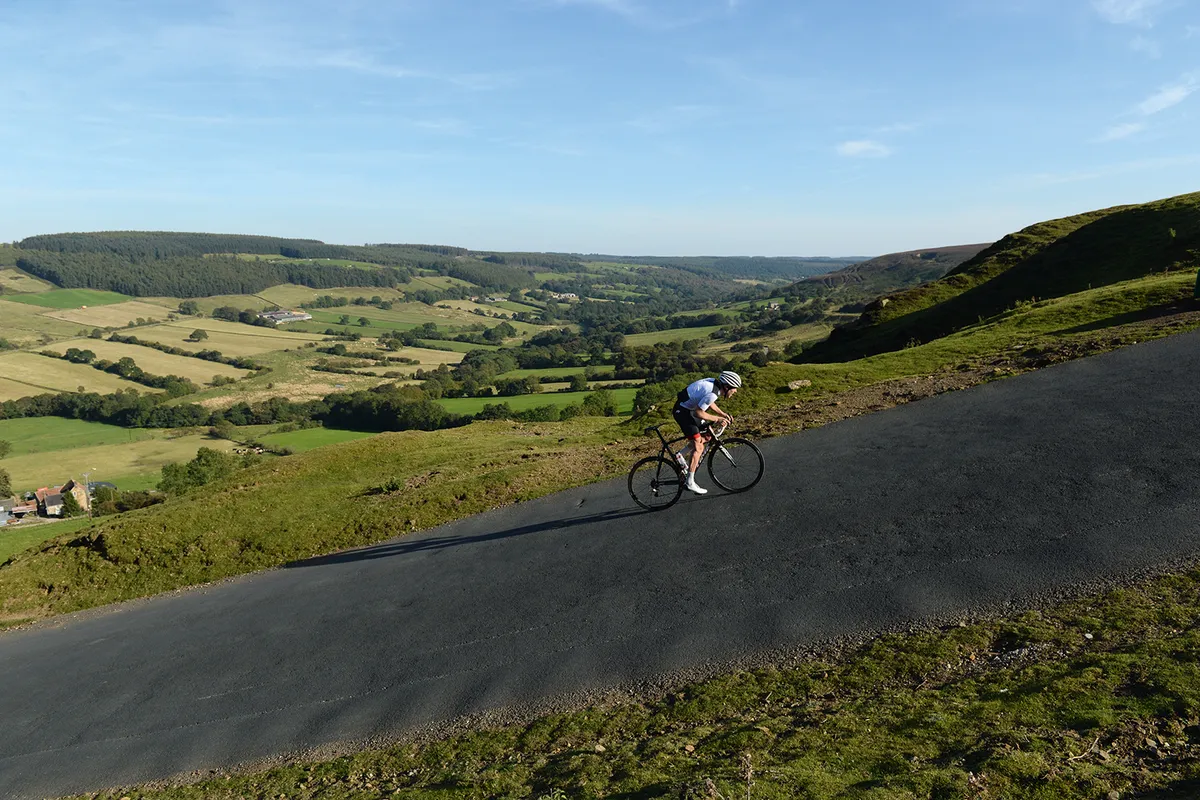
- Length: 1,340m
- Height gain: 168m
- Average gradient: 14 per cent
- Maximum gradient: 33 per cent
Taking its name from the Victorian smoke stack that once stood above the mines near the summit, Rosedale Chimney, or Chimney Bank, is arguably the most famous cycling climb in Britain, its legend cemented in the fabric of the sport thanks to its inclusion in the Milk Race and previous incarnations of the Tour of Britain.
In a region famed for its steep roads, and where there seems to be a 1-in-3 sign around every corner, Chimney Bank stands apart. While many of the climbs here flirt with 30 per cent gradients, Chimney Bank wallows in it.
When you arrive at the base, the warnings are writ large on a giant sign leaving you under no illusions that what you are about to face is terrifying.
Creeping gradually upwards between tall hedgerows, the opening moderate part of the climb comes to an end as you cross a cattle grid. After that, it’s on. There’s a brace of steep bends, the first hard, the second all but impossible.
On other climbs, this is where the impossible would end and a semblance of normality would return, but no, not on Rosedale Chimney. Instead of easing back, the slope takes on characteristics that one might associate with a wall.
Hardknott Pass, Lake District
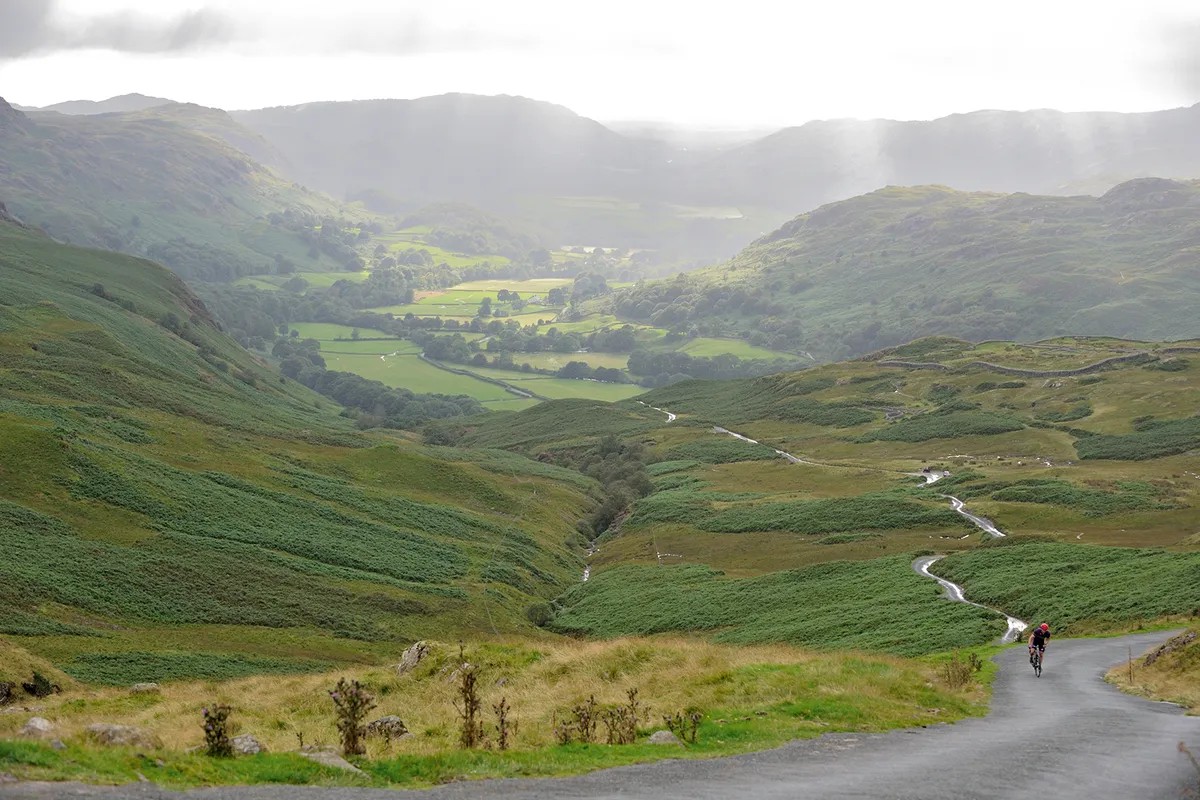
- Length: 2,203m
- Height gain: 293m
- Average gradient: 13 per cent
- Maximum gradient: 33 per cent
Asked to name a steep climb, most British cyclists would choose Hardknott Pass. There is no more daunting sight for a rider across the whole of Britain than what greets you on the approach to this monster through Eskdale.
You know it’s coming, there is no other way out of the valley and throughout the run-in, your eyes are scanning the horizon for that unmistakable sliver of tarmac. When you do finally catch a glimpse, you immediately want to unsee it.
You rub your eyes, you gulp, your heart pounds and from the moment you pass the 30 per cent sign at the bottom you run out of synonyms for ‘hard’ to describe its depravity.
Crossing the cattle grid, the 25 per cent lower slopes are awkward but merely a prelude to the main course higher up.
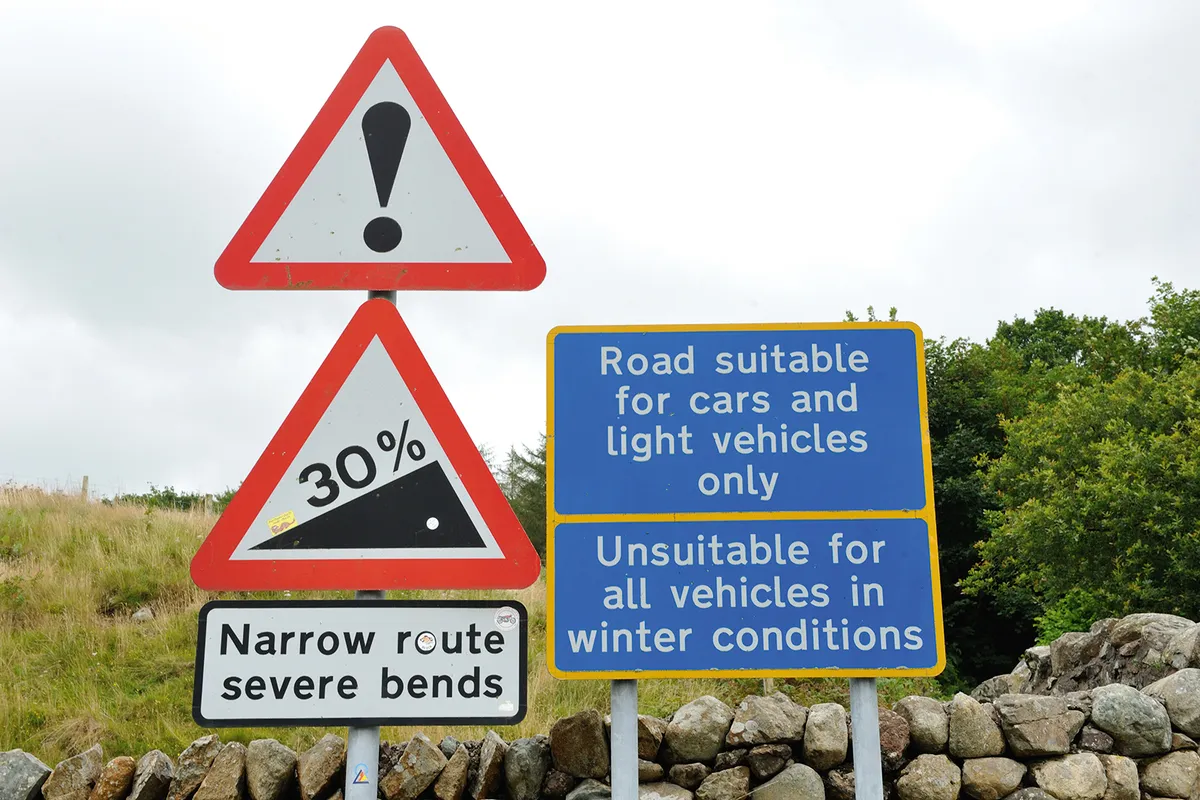
There’s a mid-climb interval, a perfect spot for some introspection – or in some cases a total mental collapse – before the slope truly kicks in.
It begins at a 90-degree left turn, the point at which you have to commit 100 per cent, fix your eyes on the bend ahead and hold on like grim death.
It’s here where photographers lie in wait at the Fred Whitton Challenge sportive to catch the unfortunate as they topple over, and it’s here where we say if you can ride this stretch of tarmac, you can ride just about anything.
Ffordd Pen Llech, Harlech, Wales
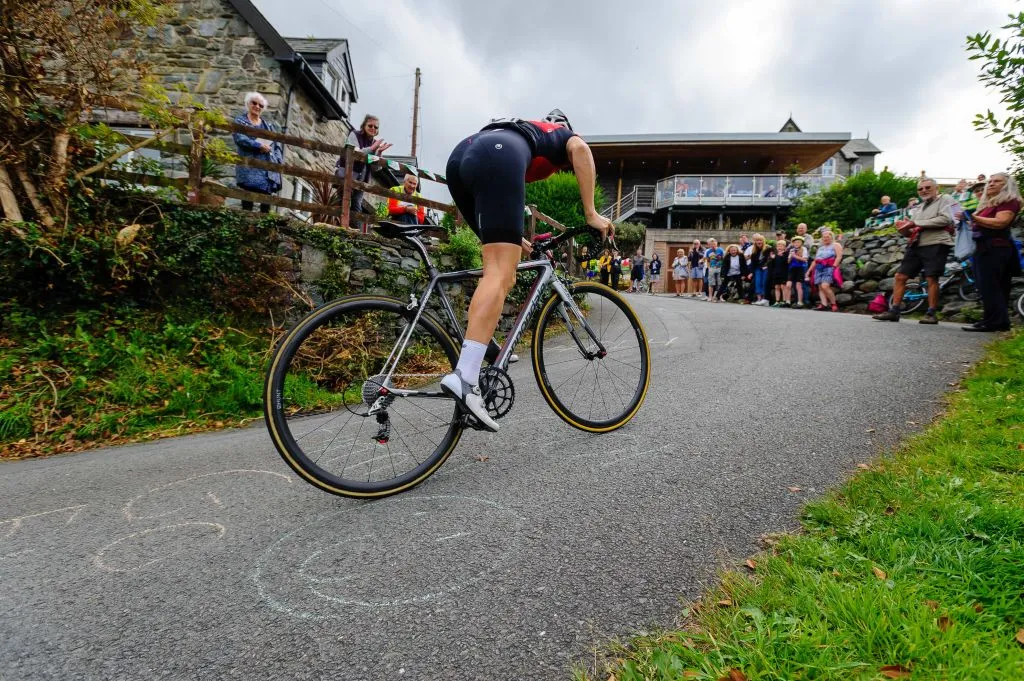
- Length: 335m
- Height gain: 54m
- Average gradient: 20 per cent
- Maximum gradient: 28.6 per cent
In 2019, Ffordd Pen Llech set out its claim to be the steepest residential road on the planet, a title held by Baldwin Street in Dunedin, New Zealand. Employing a team of surveyors and suits at Guinness World Records, they took their measurements and duly proclaimed Ffordd Pen Llech steeper, even if they had somewhat tweaked the rules.
The official measurement must be taken along 10 metres in the middle of the road, but they measured it across the apex of the steepest corner and it was therefore invalid. It did eventually post a figure of 28.6 per cent for 10 metres, but this was no match for Baldwin Street’s 34.8 per cent, and after holding the record for nine months it was returned to New Zealand.
Not the steepest residential road, then, nor the advertised 40 per cent, as indicated by the street sign at the bottom – just inordinately steep, and vertiginous enough to make our list.
Another danger here is that you’d be breaking the law in riding it, as it’s one way at the bottom to stop motorists getting into bother.
Closed hill climbs have been held on it, however. The key to riding it is to hit the first corner with as much speed as you can carry, riding wide left, and giving it everything you have.
Once around this bend, the slope soon recedes to a more agreeable gradient (more agreeable in the context of steep climbs, anyway!), then becomes positively placid as it weaves up through the village.
The end is abrupt, mind you, and once you arrive there, prepare to be the focus of attention as tourists gawk while you sit slumped over your bars gulping in air in a bid to recover from one of the world’s steepest stretches of road.
Afon Ddu, Conwy Valley, Wales
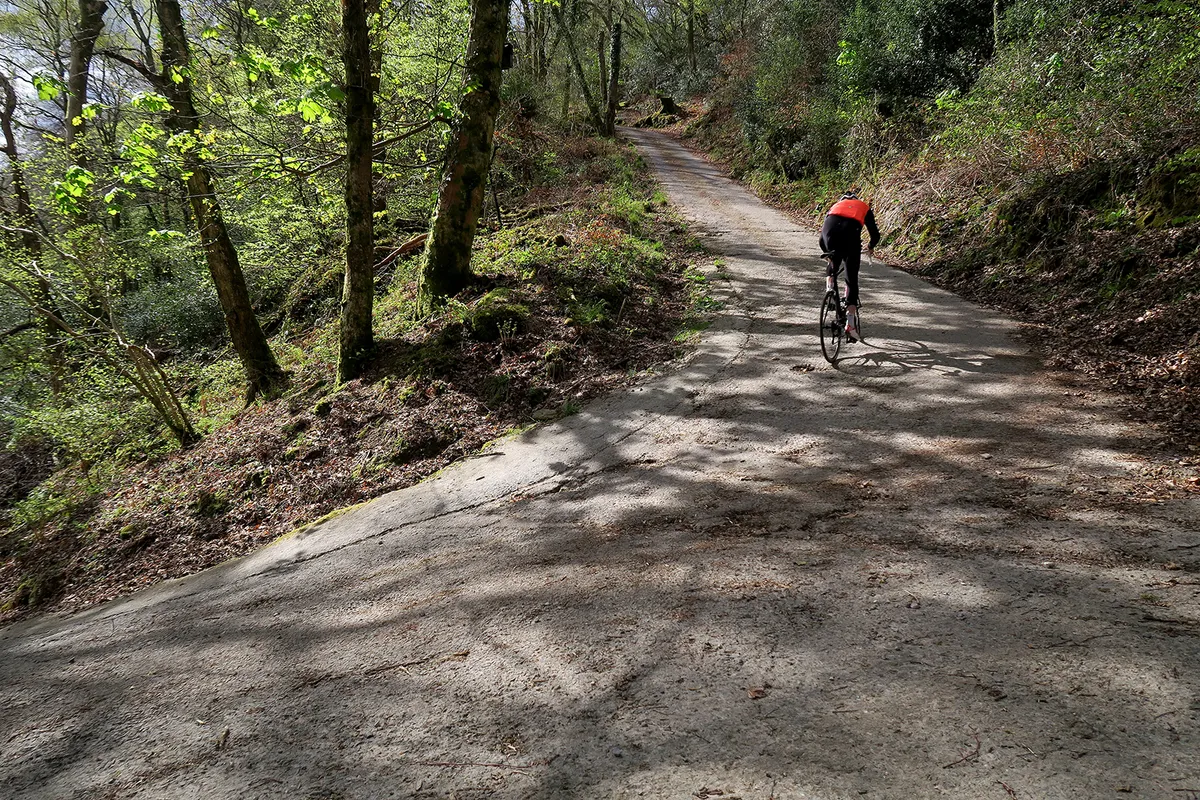
- Length: 691m
- Height gain: 156m
- Average gradient: 22 per cent
- Maximum gradient: 34.5 per cent
The Conwy Valley is home to a plethora of vicious roads, from the climb up to the Rowan Youth Hostel, to the evil Melin-y-Coed and the one and only Cowlyd.
Putting them all in the shade, however, is Afon Ddu. Brought to our attention by local hill-climbing ace Dan Evans, you can ride the road that it sprouts off many times before realising it’s even there.
At the base, it just looks like a driveway, an old concrete service road with no indication of the horrors lurking further up. Right from the get-go, the slope is extreme as it ramps from bend to bend.
Under your wheels, the concrete surface is rough and ridged, which somewhat impedes the progress of your front wheel, yet aids the traction of your rear.
The 20-25 per cent ramps are punctuated by corners and the odd momentary easing of hostilities, where you can take a breather. Climbing higher through the dense trees at the end of the daunting middle stretch, there is a plateau on the last bend that allows you to glance upwards at the finale.
At this point, religious riders will cross their chests and look to the heavens for divine intervention, as the road moves through the gears to nearly 35 per cent. It takes every ounce of effort, every sinew of muscle to beat this gradient into submission.
Make it through and you will have conquered the forces of nature and defied the limits of what should be humanly possible.
